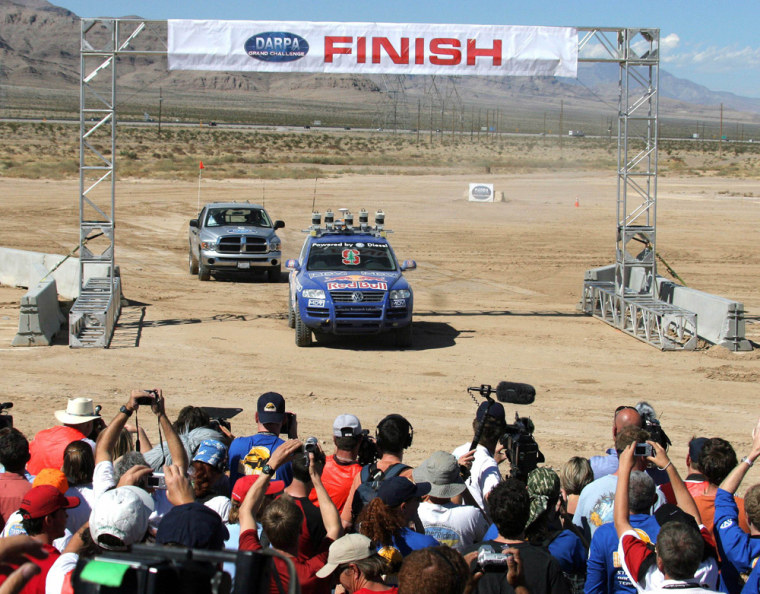The winners of last year's Pentagon-sponsored robot race are back to take on another challenge — this time to develop a vehicle that can drive through congested city traffic all by itself.
Stanford University, whose unmanned Volkswagen dubbed Stanley won last year's desert race, was among 11 teams selected Monday to receive government money to participate in a contest requiring robots to carry out a simulated military supply mission.
Stanford, which teamed up with the German automaker again, will enter a Passat sedan outfitted with the latest sensors, lasers and other high-tech gear. Engineers have tested the car on a closed course and will begin actual tests after scientists finish writing the program that will serve as the car's brain.
"It's definitely a more challenging problem scientifically," said team member David Stavens.
The competition, slated to take place in a yet-undisclosed location in November 2007, is supported by the Pentagon's Defense Advanced Research Projects Agency, or DARPA, to spur development of military vehicles that could fight in war zones without any sort of remote control.
The robotic vehicles will have to navigate a complex 60-mile test course designed like a real city street filled with moving manned and unmanned vehicles. Participants will be tested on how well they make sharp turns, navigate traffic circles and avoid obstacles such as utility poles, trees and parked cars. The vehicles will also have to obey traffic laws, change lanes, merge with moving cars and pull into a parking lot using only their computer brain and sensors.
The first three vehicles that successfully complete the mission in less than six hours will win trophies, according to updated rules posted on DARPA’s Web site.
The robotic challenge could turn into a rematch between archrivals Stanford and Carnegie Mellon University. CMU came in second and third last year with a converted Humvee and Hummer.
CMU, which recently partnered with General Motors Corp., will enter a souped-up Chevy Tahoe. Engineers are installing computers and sensors and will test the vehicle later this month.
Team member Chris Urmson said cars have to be smarter this time around. "The biggest challenge will be to drive in traffic and stay on the road. It's a whole new level," Urmson said.
The 11 teams, made up of mostly veterans from last year's robotic challenge, each will receive up to $1 million in funding from DARPA. In turn, the agency will obtain some licensing rights to the technology that's developed.
The other teams include: Autonomous Solutions of Utah, California Institute of Technology, Cornell University, Golem Group LLC of California, Honeywell Aerospace Advanced Technology, Massachusetts Institute of Technology, Oshkosh Truck Corp., Raytheon Co., and Virginia Polytechnic Institute and State University.
Later this month, DARPA will choose an undisclosed number of teams that will not be subsidized by the agency but can compete for a spot in the finals.
Last year, DARPA awarded a $2 million winner-take-all prize to Stanford, which beat out a field of 23 vehicles by traversing 132 miles of the Mojave Desert.
DARPA's inaugural contest in 2004 ended without a winner when all the entrants broke down before the finish line.
